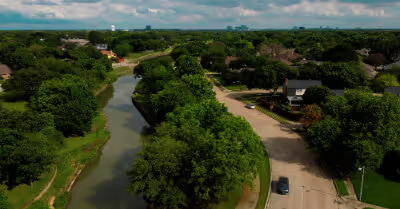Table of Contents
What Is The Senior Care Service Demand Like?
Family and friends are always searching for ways to make sure their seniors are well cared for and comfortable. Some people tend to hire nurses to provide care to their seniors at home or move the seniors to live with them to provide first-hand care.
However, some people decide to enroll the seniors in centers that provide services catered to seniors, such as assisted living facilities or retirement homes. These services are the long-term answers to most of the issues the senior care industry faces.
Records have shown that the worldwide senior care service industry saw its revenue rise to $225 billion last year from $100 billion back in 2016. This increase is driven by long-life expectancies, expanding older populations, and altered federal laws that enable increased frequency in service and payment choices for residents.
Additional senior care services such as continuing care, skilled nursing, and assisted living facilities have also been projected to see growth. Regardless of this increase, the senior care and assisted living industry is nowhere near fully capacitated.
What Exactly Is An Assisted Living Facility?
The term assisted living is used to describe a residential option designed for the elderly that either need or want help with daily activities. Such activities may include cooking meals, going to the bathroom, keeping houses, traveling to doctor’s appointments, and more.
It can be a great choice for the seniors that require more personal services than what’s available to them in a retirement community or their home, without requiring round the clock medical supervision or care associated with a nursing home.
How Profitable Is An Assisted Living Facility?
The US senior care industry has seen a lot of growth over the years and appears very promising. This is down to the major advancement in healthcare technology and a large number of baby boomers retiring. All of this has resulted in the biggest population of elderly the country has ever seen.
The booming senior population highlights the golden opportunity for those looking to invest in the industry. Every prospective investor is first concerned with how lucrative owning and operating an assisted living facility is.
An assisted living facility the size of a single-family house can generate a gross profit of $36,000 and $10,000 in cash flow per month. The value provided typically depends on a varying list of factors such as its amenities, location, and size.
A larger facility with exceptional amenities and can maintain full capacity has the potential for increased gross profits over a smaller one with less occupancy and fewer amenities. If you choose to create a unique brand that operates more facilities spread across different locations, making a lot more profit is possible.
Where Should An Assisted Living Facility Be And What Services Should I Offer?
A great assisted living facility is one that is situated close to the resident’s family and in a middle-upper income area. The advantage of having the seniors live close by is that their family knows that they can always visit and give them peace of mind. It’s a great idea to create an assisted living facility not too far away from the residential part of town.
A great way to increase profit margins is to offer additional services on the premises, like charging additional fees for amenities like cable Television packages, entertainment events, other dining options, and specialized care.
The assisted living facility market in the United States was estimated to be worth around $74 billion back in 2018, with a compound annual growth rate of 6.5% over that period. Assisted living facilities that are stable, have an operating margin profit of about 28 to 38%. However, this margin does decrease in assisted living facilities that offer memory care.
What Are the Factors To Consider Before Owning an Assisted Living Facility?
You have to understand that the elderly care industry is not without its challenges. The COVID 19 pandemic has also added a new set of challenges that any investor would have to surmount. Before the pandemic, occupancy levels were increasing.
However, they have been dropping since the onset of the pandemic. This is because prospective residents stay away from the facilities that have suffered the coronavirus pandemic’s brunt. It doesn’t help that over 45,00 residents and staff have died due to the coronavirus pandemic. And this number accounts for about a third of the nation’s fatalities.
When you invest in an assisted living facility, you have to understand that you are a lot more than just a landlord. You are a critical service provider as you have to deal with increasing disinfecting costs, providing protective gear to your staff, and reinforcing them when necessary.
Experts state that the costs associated with owning an assisted living facility as well as other elderly designed facilities, in general, are rising. They also state that these rising costs show no sign of abating, and that could cause margins to be compressed, turning off numerous investors from the assisted living facility business.
The latest report states that assisted living facilities still operating amongst a closure wave have undergone a drop in usage, which has resulted in operating profit margins taking a dip. In certain states, such as Massachusetts, assisted living usage dropped by 5.4% in 4 years, with the average operating margin falling to -3.0% over that same period.
Assisted Living Facilities Still Hold Promise For Investors
The entire housing property market, which includes assisted living, was analyzed, and it showed that the aggregate operating margin fell from 2016 to 2017. This fall was confirmed by a State of Senior Housing report, which collated data from 1,700 senior departments, independent living communities, continuing care retirement homes, and assisted living residences.
It showed that operation margins fell by 3.5%, with the biggest fall of 10.2% attributed to assisted living facilities. This, however, does not mean assisted living facilities aren’t profitable. There are thousands of facilities that turn a significant net profit.
For example, it isn’t uncommon for assisted living facility investors to rake in gross profits of about $1 million or more with franchising. The principal investment required to open an assisted living facility franchise includes training costs, marketing fees, and the franchise fee. The average investment in a senior care franchise, including the startup fees, is typically between $93,000 to $316,000. It is important to remember that the price is generally dependent on the franchise concept.
How Is Profit Calculated?
The most prevalent valuation method utilized to estimate a steadied assisted living facility’s value involves expenses NOI or Net Operating Income and revenues. It also assesses the facility’s gross revenue and the COGS or cost of goods sold to determine if there is a financial loss or gain.
Net operating income can be used to analyze an assisted living facility’s profitability as it adequately reflects the necessary and reasonable operating cost. Net operating costs is the term given to earnings before taxes and interest. It can be used to ascertain an assisted living facility’s viability.
Recent Articles
















